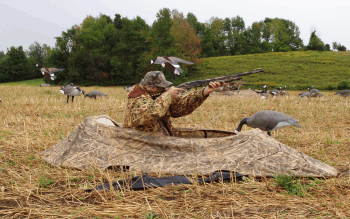Gun shops are like a candy store for sportsmen. We dream about the new shooting iron we’ll take to the field this fall. We can’t wait to try it out and we often expect that it will dramatically increase our proficiency as shooters. Unfortunately, this is rarely the case. There is an old saying: “Beware the man that shoots one gun”! There is a good chance that his shotgun is set up incorrectly but he has probably learned through repetition to shoot it well. Is this the best we can hope for? – Certainly not! Here is the proper procedure for selecting and setting up a shotgun.

First, look for the shotgun which will best serve your purpose (application). Should it be a “pump gun”, an “autoloader” or maybe an “over and under”. Then, you and the gun need to visit a gun fitter. We are all built differently and consequently will shoot the same gun differently. Gun fitters will check eye dominance, pitch of the gun, cast, and length of pull. The shotgun can now be manipulated to match these measurements. Once a shooters measurements are on record, subsequent shotguns can be set up the same way. The results – an assortment of shotguns that will perform the same way.
Gun fitters should make the shooter fire the shotgun at a patterning board to make sure that the fit is correct. Some shooters like a 50/50 pattern, while others prefer a 60/40 pattern. When field gunning a 60/40 pattern can be a good place to start. The patterning board has a small black dot in the center of the board. Shooters will mount the gun slowly and fire when the front bead covers the black dot. Once this has been done several times, the board is examined to see what percentage of pellet strikes occur above or below the dot. A 60/40 pattern will have 60 percent above and 40 percent below. This is an acceptable field set up because most shots that occur in the field are at rising targets. Even decoying waterfowl will begin to rise when hunters come out of the blind.
A new shooter has the advantage of being set up correctly the first time. When they begin to shoot, many stumbling blocks are eliminated immediately. Veteran shooters may be compensating for shotguns that are set up incorrectly and may need some retraining to shoot well. In the end, both will become better shots and enjoy their bird hunting more!
Leave a Reply